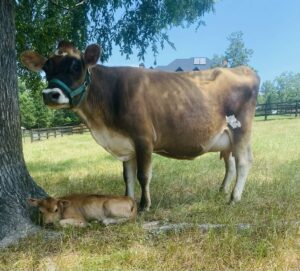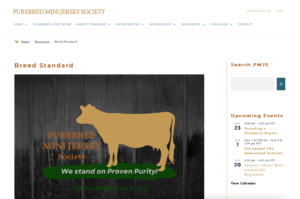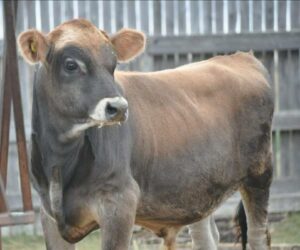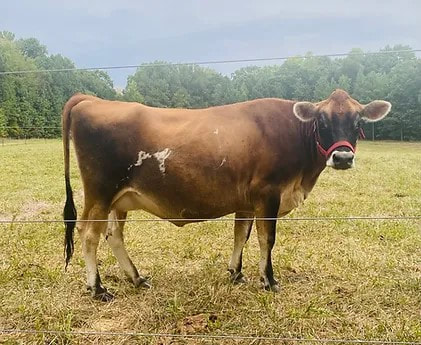
A Very Deep Dive
Have you seen “BBR” on some Mini Jersey website or ads and wondered what it means? Breed Based Representation is a fairly new term to the Mini Jersey market. Assays to genotype large numbers of single-nucleotide polymorphisms (SNPs) used in genomic evaluation has been in use by standard Jersey breeders since 2007. “Genotypes are checked using breed-specific markers to verify that the reported breed matches the animal’s actual breed as part of routine data edits. An animal’s breed is validated using SNPs that are nearly monomorphic in one breed and have fewer than 30% of animals homozygous for that allele in another breed.“, Genomic Selection in Dairy Cattle: The USDA Experience,
Annual Review of Animal Biosciences, Vol. 5:309-327, published February 2017.
Essentially, this technology has been widely available and used for commercial dairy and beef cattle for over a decade. As owners of a family cow or Mini Jersey, we were told it didn’t apply to our cattle. Why wouldn’t it if they’re related recently to a Jersey? Turns out, the testing works just fine for Purebred Mini Jerseys!
About the Database

Oak Spring Meadows Farm, NC
BBR is a genomic test that compares the DNA of a genotyped (tested) animal to a Jersey reference group and four other typed breeds; Holstein, Guernsey, Brown Swiss, and Ayrshire. “Breed composition for crossbred animals can be estimated based on the breed-specific markers, and in 2016 USDA developed a breed base representation value to report the percentage of DNA contributed to an animal by each of the five breeds currently evaluated genomically.”, from the Genomic Selection in Dairy Cattle: The USDA Experience.
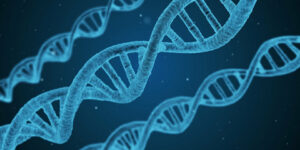
”The Council on Dairy Cattle Breeding (CDCB) policy is to report BBR values of 94 or greater than 100 due to standard deviations. Cattle below BBR 94 will be reported on their pedigree. The AJCA will publish a BBR value for all genomic tested and recorded animals.”, taken from the CDCB website. To learn more about AJCA pedigree rules for registering Jersey Cattle, click HERE.
“Inheritance of DNA from different dairy breeds can be determined by genotyping, just as individual ancestors such as parents, grandparents, or even great-grandparents can be identified correctly in a high percentage of the cases by genotyping even if not reported or reported incorrectly in pedigrees. Numbers of crossbreds in the US dairy herd have increased by about 400% in the last decade. A procedure developed to determine the extent to which alleles of various breeds appear represented in these crossbreds and in apparent purebreds was used to document breed composition in animals genotyped. The procedure constructed purebred reference groups (PRG) containing registered AI bulls (with milking daughters) chosen to represent 5 different breeds: Ayrshire (AY), Brown Swiss (BS), Guernsey (GU), Holstein (HO), and Jersey (JE). Any bull having an ancestor of another breed in his recorded 5-generation pedigree was excluded from the PRG. An exception was made for AY where other red breeds were permitted. The procedure was termed Breed Base Representation (BBR) and estimated the similarity of the alleles present in the 5 PRGs to those of individuals genotyped. BBR percentages of the 5 breed alleles were calculated, then restricted to be between 0 and 100% for each genotyped animal, and summed. The more an animal’s alleles resembled those in a PRG, the higher its BBR percentage for that breed. The percentages help reveal the presence of either outcross bloodlines or crossbreeding, which are difficult to separate. Because animals vary even within breeds, the true source of the various breed alleles differs somewhat from the BBR percentages derived by the procedure. The number of AI bulls in the reference populations in March 2016 was 442 AY, 5,464 BS, 550 GU, 19,209 HO, and 3,147 JE. The percentage of the primary breed for these were 97.2, 97.6, 97.8, 99.2, and 98.0%, respectively, implying they are indeed purebreds. The standard deviations (SD) were 1.9, 1.2, 2.7, 1.2, and 1.0%. The mean percentages were 94.8, 97.0, 97.8, 99.0, and 96.5%, respectively for all males genotyped for these breeds (201,283), and 95.0, 97.1, 96.9, 98.9, and 96.5% for all genotyped females (994,949). SDs for all males and females genotyped ranged from 1.2 and 1.5% (HO) to 5.6 and 4.4% (AY). Genetic predictions for animals having crossbred genetics in their pedigrees could be obtained in the future by weighting marker effects from each breed by BBR.”, from the Genomic Selection in Dairy Cattle: The USDA Experience.
In short, we can trust the science behind the results because the database is derived from pure Jerseys from around the world, all of whom are descendants of the Isle of Jersey. As with Jerseys, the other typed breeds with a database are thought to be pure, with the exception of Ayrshire.
BBR in 2023
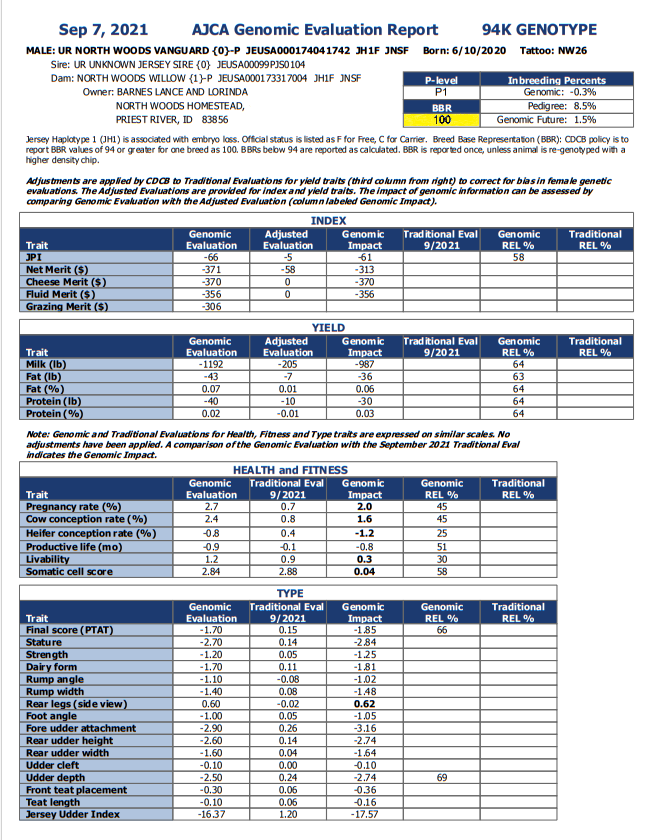
Early in the use of genomic testing, there were a lower number of SNPs. My first cattle were tested with the 9k tests. It soon jumped to 45k. The recent 94k test just became 100k. Some Mini Jerseys tested with the 45k test are producing calves with a slightly lower BBR due to the more sensitive 100k test. If we hold the course and continue to breed for a higher Jersey purity unhappy surprises like this will become a thing of the past.
Some bloodlines consistently have lower BBR purity scores. These can be bred to known highly pure Jersey cattle to keep genetic diversity but improve the line.
Purebred Mini Jerseys with a higher BBR are in the greatest demand. Since miniature dairy cattle have grown in popularity and price in recent years, buyers are taking the time to educate themselves on what the difference is between a “Mini Jersey” for $2500 and a Purebred Mini Jersey for $6500. The rare Purebred Mini Jersey bull with BBR100 is needed to improve the gene pool.
Further Reading
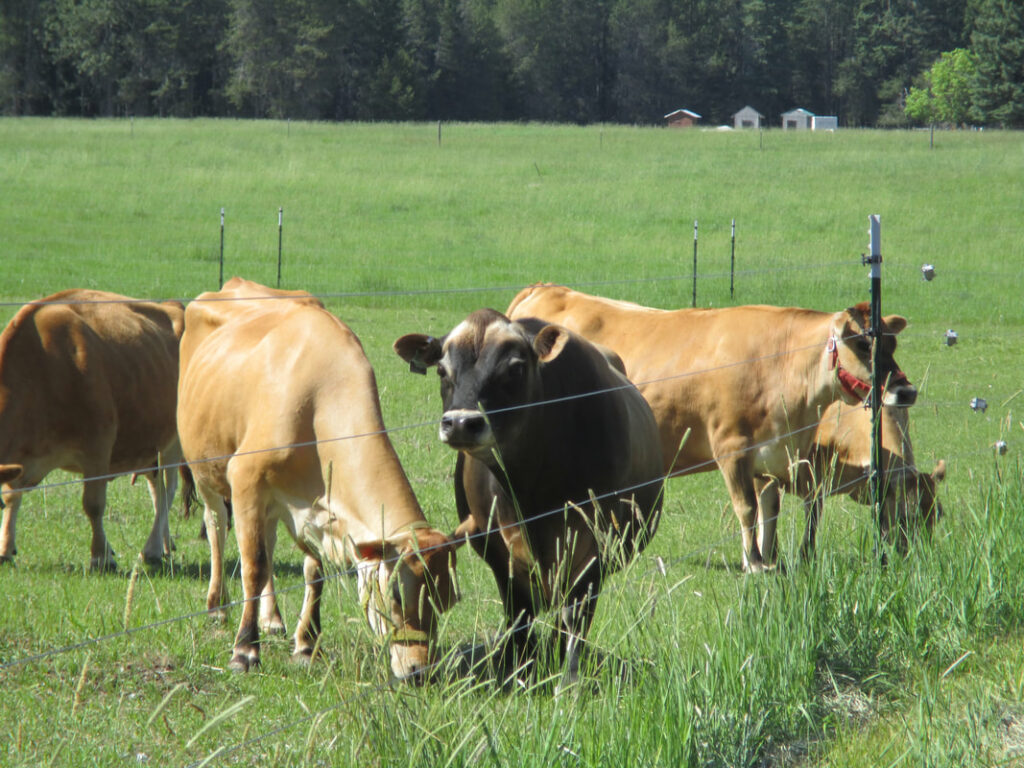
- Breed Based Representation in Dairy Animals, Published in Jersey Journal 8/2016
- Breed Base Representation in Dairy Animals of 5 Breeds, Published in Journal of Dairy Science 7/9/2016
- AJCA Pedigree Recording and Registry Status, Published 1/1/2023
- Jersey Generation Counts and Breed Purity
- Genomic Selection in Dairy Cattle: The USDA Experience, Annual Review of Animal Biosciences, Vol. 5:309-327, Published 2/2017
Thank you for your interest in better understanding BBR!
Sincerely,
Lorinda Barnes
PMJS President
